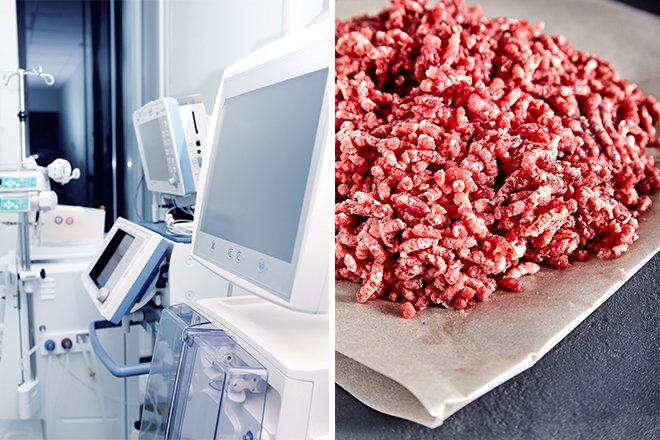IIA Lab Services Part 2: From Medical Devices to Burgers

From Medical Devices to Burgers
This is Part 2 of our discussion on the many interesting and necessary uses of Radiography and other non-destructive testing (NDT) methods. In Part 1, we talked about IIA’s involvement in the iconic Gateway Arch in St. Louis and how our experts have provided thousands of weld integrity scans for large structures, such as the arch as well as for many bridges and skyscrapers.
There are so many other excellent and important uses for NDT that sometimes are not recognized or discussed. For example, important testing for the medical device industry. Implantables, surgical tools, and other medical devices are necessary to many people across the world to save and make lives better. But, first these devices must be deemed safe for use and have no issues, such as contaminants within the material. IIA Lab Services experts are tapped regularly to inspect medical instruments and implant materials to ensure mechanical integrity and safe material properties for these important aspects of the healthcare industry.
Endless Uses
The stories of lab testing and non-destructive testing, such as Ultrasonic examination and Radiography being used in what may seem to be non-traditional ways are endless. Commercial airliners, private aircraft, and even fighter jets are all routinely inspected for airworthiness using non-destructive means.
In the food industry, X-ray and Chemical testing are also often used when food products have been -- or thought to have been -- contaminated with foreign substances. An X-ray has the capability to identify any foreign materials, or lack thereof, in order for the food manufacturer to stay on track with producing and distributing safe products.
In the art world, antiques, paintings, and other expensive pieces are inspected using these methods to determine what materials have been used to create the artifacts; thus leading to origin and age identification. These same tests can help determine authenticity and determine whether a particular piece is a forgery. IIA has assisted several institutions in the St. Louis area with this endeavor in relation to the local artwork collection.
Lab testing and traditional UT testing is used in a variety of surprising ways to determine safety and strength. Where else can we use non-destructive testing. Let’s see...
Will that new cage at the zoo really hold a 300 pound gorilla?
Mechanical testing can tell us.
What’s the fat content of that shipment of ground beef?
Content testing can tell us.
Are there voids in those golf club heads?
Let’s shoot some X-Rays and find out!
IIA’s experts think outside the box to help you determine weld integrity, chemical analysis, safety, mechanical soundness and more through many methods, including non-destructive testing, such as traditional radiography, as well as mechanical testing (and more) within our Lab Services Division.




